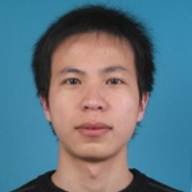International Journal of Information Technology and Computer Science (IJITCS)
IJITCS Vol. 6, No. 3, 8 Feb. 2014
Cover page and Table of Contents: PDF (size: 424KB)
Robustness Analysis of Layered Public Transport Networks Due to Edge Overload Breakdown
Full Text (PDF, 424KB), PP.30-37
Views: 0 Downloads: 0
Author(s)
Index Terms
Complex Network, Layered Bus-Transport Networks, Robustness, Cascading Failures
Abstract
The robustness of urban bus-transport networks has important influence on the network performance. This paper proposes the model of layered public bus-transport network which is composed of the logical layer and the physical layer and expounds the relationship between these two layers. We map the bus-transport network into two spaces: space P and space L and take space P as logical layer while space L as physical layer. We define the load of edges in the physical layer according to the traffic flow in the logical layer and assume that a removed edge only leads to a redistribution of the load through it to its neighboring edges. We analysis the robustness of layered public bus-transport networks in the face of cascading failure under the case of removing the edge with the highest load and redistributing of the load. Through the simulation of the public bus-transport networks of three major cities in China, we find that in the layered public bus-transport network the traffic flow in the logical layer affects the distribution of load of edges in the physical layer. The removal of the edge with the highest load may lead to the cascading failures of the physical layer, and the avalanche size decreases with the increase of the tolerance parameter.
Cite This Paper
Youyu Dong, Xuhua Yang, Guang Chen, "Robustness Analysis of Layered Public Transport Networks Due to Edge Overload Breakdown", International Journal of Information Technology and Computer Science(IJITCS), vol.6, no.3, pp.30-37, 2014. DOI:10.5815/ijitcs.2014.03.04
Reference
[1]S.H.Strogatz, Exploring complex networks, Nature 410 (2001) 268.
[2]A.-L.Barabasi, R.Albert, H.Jeong, Statistical Mechanics and its applications, Physica A 281 (2000) 69.
[3]A.-L.Barabasi, R.Albert, H.Jeong, Mean-field theory for scale-free random networks, Physica A 272 (1999) 173.
[4]D.J.Watts, S.H.Strogatz, Collective dynamics of small-world networks, Nature 393 (1998) 440.
[5]D. WATTS, S. Strogatz, Collective dynamics of small-world networks, Nature, 393 (1998) 440.
[6]A.-L. Barabási, R. Albert, Emergence of scaling in random networks, Science, 286 (1999), 509-51.
[7]R. Albert, H. Jeong, A.-L. Barabási, Error and attack tolerance of complex networks, Nature, 406 (2000), 378-381.
[8]Cohen R, Erez K, Shlomo Havlin, Resilience of the internet to random breakdowns, Phys.Rev.Lett, 85 (2000) 4626-4628.
[9]Cohen R, Erez K, Shlomo Havlin, Breakdown of the internet under intentional attack, Phys.Rev.Lett, 86 (2001) 3682-3685.
[10]Petter Holme, Beom Jun Kim, Chang No Yoon, Seung Kee Han, Attack vulnerability of complex networks, Phys. Rev. E, 65 (2002) 056109.
[11]X.Xu, J.Hu, F.Liu, L.Liu, Scaling and correlations in three bus-transport networks of China, Physica A, 374 (2007) 441.
[12]P.Sen, S.Dasgupta, A.Chatterjee, P.A.Sreeram, G.Mukherjee, S.S.Manna, Small-world properties of the Indian railway network, Phys. Rev. E, 67 (2003) 036106
[13]K.A.Seaton, L.M.Hackett, Stations, trains, and small-world networks, Physica A, 339 (2004) 635.
[14]R.Guimer’a, L.A.N. Amaral, Modeling the world-wide airport network, Eur.Phys.J.B, 38 (2004) 381.
[15]W.Li, X.Cai, Statistical analysis of airport networks of China, Phys.Rev.E, 69 (2004) 046106.
[16]M.Marchiori, V.Latora, Harmony in the small-world, Physica A, 285 (2000) 539.
[17]V.Latora, M.Marchiori, Efficient behavior of small-world networks, Phys.Rev.Lett, 87 (2001) 198701.
[18]V.Latora, M.Marchiori, Is the Boston subway a small-world network? Physica A, 314 (2002) 109.
[19]J.Sienkiewicz, J.A.Ho Lyst, Public transport systems in Poland: from Bialystok to Zielona Gora by bus and tram using universal statistics of complex networks, arXiv:physics/0503099,2005.
[20]C.Ferber, Y.Holovatch, V.Palchykov, Scaling in public transport networks, arXiv:cond-mat/0501296.
[21]Wu J J, Gao Z Y, Sun H J, Urban transit system as a scale free network, Modern Physics Letters B, 18 (2004) 1043.
[22]Ferber C V, Holovateh T, Holovatch Y, Attack vulnerability of public transport networks,Traffic and Granular flow, 07 (2009) 721-731.
[23]Schafe M, Scholz J, Greiner M, Proactive robustness control of heterogeneously loaded networks, Phys.Rev.Lett, 96(2006)108701.
[24]M.Kurant, P.Thiran, Layered Complex Networks, Phys.Rev.Lett, 96 (2006) 138701.
[25]M.Kurant, P.Thiran, Error and attack tolerance of layered complex networks, Phys.Rev.E, 76 (2007) 026103.
[26]Motter A E, Nishikawa T, Lai Y C, Cascade-based attacks on complex networks, Phys.Rev.E, 66 (2002) 065102.
[27]Holme P,Kim B J, Vertex overload breakdown in evolving networks, Phys.Rev.E, 65 (2002) 066109.
[28]Crucitti P,Latora V, Marchiori M, Model for cascading failures in complex networks, Phys.Rev.E, 69 (2004) 045104.
[29]Y.Zhuo, Y.F.Peng, C.Liu, Y.K.Liu, Traffic dynamics on layered complex networks, Physica A, 390 (2011) 2401.
[30]C.vonFerber, T.Holovatch, Yu.Holovatch, V.Palchykov, Network harness: Metropolis public transport, Physica A, 380 (2007) 585.
[31]X.Xu, J.Hu, F.Liu, L.Liu, Scaling and correlations in three bus-transport networks of China, Physica A, 374 (2007) 441.
[32]Y.Z.Chen, N.Li, D.-R.He, A study on some urban bus transport networks, Physica A, 76 (2007) 747.
[33]S.-R.Zou, T.Zhou, A.-F.Liu, X.-L.Xu, and D.-R.He, Topological relation of layered complex networks Phys.Lett.A, 374 (2010) 4406.
[34]X.H.Yang, B.Wang, W.L.Wang, Y.X.Sun, Research on some bus transport networks with random overlapping cliquestructure, Communications in Theoretical Physics 50(5)(2008) 1249–1254.
[35]Wang, W.X.Chen, G.R, Universal robustness characteristic of weighted networks against cascading failure, Phys.Rev.E, 77 (2008) 026101.
[36]WANG Jian-wei, RONG Li-li, Edge-based-attack induced cascading failures on scale-free networks, Physica A, 388 (2009) 731-1737.
[37]BaharanMirzasoleiman, MahmoudrezaBabaei, Cascaded failures in weighted networks, Phys.REV.E, 84 (2011) 046114.
[38]Jian-WeiWang, Li-LiRong, Robustness of the western United States power grid under edge attack strategies due to cascading failures, Safety Science, 49 (2011) 807–812.
[39]E, Nishikawa T, Lai Y C, Cascade-based attacks on complex networks, Phys.Rev.E, 66 (2002) 065102.


